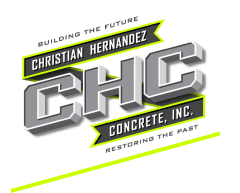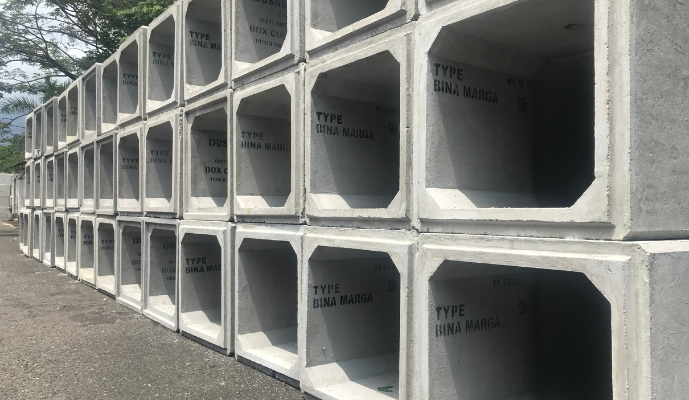Concrete culverts channel water efficiently under roadways and embankments, preventing erosion and structural damage when designed and built correctly. This culvert installation guide promises to resolve common drainage setbacks by explaining core concepts, planning and design criteria, cast-in-place and precast methods, durability enhancements, maintenance practices, and cost considerations. You will discover how to assess hydraulic loads, prepare trench bedding, place reinforcement, optimize concrete mixes, and extend culvert lifespan. These principles are critical for building a concrete culvert that stands the test of time and heavy traffic.
What Is a Concrete Culvert and Its Role in Drainage?
A concrete culvert is a rigid conduit installed under roads or embankments to direct surface or subsurface water flow and reduce erosion. By creating a stable passage, it controls water velocity, prevents bank scour, and supports roadway integrity under hydraulic pressure. Proper culvert selection enhances site drainage, safeguards infrastructure, and reduces flood risks.
Water collects upstream, enters the culvert barrel, and exits downstream in a controlled manner. This process avoids uncontrolled channel formation that could destabilize slopes and roadbeds. Understanding this mechanism is the first step in answering the question, How to Make a Concrete Culvert? Essential Tips for Strength & Durability.
Which Types of Concrete Culverts Are Most Used?
Concrete culverts come in several shapes and sizes. Each design adapts to different hydraulic and structural needs:
-
Pipe Culverts: Circular or elliptical barrels suited for low to moderate water flow with shorter spans.
-
Box Culverts: Rectangular multi-cell structures that provide high flow capacity and support heavy loads, making them suitable for highways.
-
Arch Culverts: Curved shapes that integrate with natural landscapes, often used in scenic or environmentally sensitive areas.
Each type balances hydraulic needs, soil conditions, and construction constraints to provide effective drainage.
How Do Different Materials Compare for Culvert Construction?
Although reinforced concrete is most common, alternatives like galvanized steel and HDPE exist.
-
Reinforced Concrete: Strong and long-lasting, often serving 70 to 100 years or more.
-
Galvanized Steel: Strong tensile capacity but shorter lifespan, typically 50 to 75 years.
-
HDPE Plastic: Lightweight, corrosion-resistant, and flexible, ideal for light drainage projects.
Concrete remains the preferred material for roadways and embankments because it offers durability, structural integrity, and resistance to long-term environmental stress.
How Is Site Assessment and Hydraulic Design Conducted?
Site assessment begins with surveying watershed characteristics, soil permeability, and expected flow rates. Engineers calculate culvert capacity using hydraulic models such as Manning’s equation. This ensures that water volume and velocity are correctly managed to prevent overtopping and erosion.
Soil borings are also conducted to evaluate bearing capacity and potential settlement. Combining geotechnical data with hydraulic design provides accurate culvert sizing, slope alignment, and invert elevation.
What Are the Structural Load Requirements for Concrete Culverts?
Concrete culverts must support heavy traffic loads as well as soil pressure from surrounding embankments. Engineers consider live loads from vehicles, burial depths, and lateral pressures. Using standards like AASHTO LRFD specifications, structural safety is ensured by calculating reinforcement placement, slab thickness, and soil interaction.
A balance between burial depth and load distribution keeps culverts stable under repeated stress, protecting them from cracking or deformation.
Which Industry Standards and Specifications Must Be Followed?
Culvert projects must comply with established standards:
-
ASTM C76: For reinforced concrete pipe.
-
AASHTO M 170: For reinforced concrete culvert, storm drain, and sewer pipe.
-
AASHTO M 259: For box culverts under highway loadings.
Following these standards guarantees predictable performance and quality control.
Step-by-Step Construction of Cast-In-Place Culverts
Excavation and Trench Bedding
Excavation begins by marking alignment and ensuring safe trench walls. Workers dig to design depth, creating a slope that allows smooth water flow. A bedding of compacted gravel or sand distributes loads evenly and prevents soil migration.
Formwork and Reinforcement
Forms must be carefully aligned with square corners and level edges. Reinforcement, typically steel rebar, is placed according to design. Spacers and ties keep reinforcement in place during pouring, ensuring the concrete bonds effectively around it.
Mixing and Pouring Concrete
A concrete mix of around 4000 psi compressive strength with a water-cement ratio near 0.45 is commonly used. Air-entraining admixtures are added for freeze-thaw protection. Concrete should be poured continuously in layers no thicker than 12 inches, with vibration applied to prevent air pockets.
Curing and Finishing
Concrete should remain moist for at least seven days to complete hydration. Burlap coverings or curing compounds help maintain adequate moisture. Surfaces are finished with steel trowels for smoothness or broom finishes when slip resistance is required.

Installing Precast Concrete Culverts
Advantages of Precast Units
Precast culverts are made in controlled environments, ensuring strength, consistency, and durability. They speed up installation on-site, reducing labor costs and downtime.
Placement and Bedding
Precast units are lowered into prepared bedding using cranes and spreader bars. Sections are aligned with laser levels, then joined using gaskets or grout to ensure watertight connections.
Backfill and Compaction
Backfill material is compacted evenly on both sides in small lifts to prevent settlement. This ensures that loads are distributed uniformly.
Safety Measures
Strict safety protocols are followed, including exclusion zones around lifting equipment and use of protective gear. Proper site safety prevents accidents during heavy-lifting operations.
How to Ensure Long-Term Strength and Durability
Concrete culvert durability depends on mix design, reinforcement strategies, and protective measures. Using supplementary cementitious materials like fly ash or silica fume increases density and reduces permeability. Proper reinforcement spacing helps resist cracking, while epoxy-coated rebar resists corrosion.
Surface sealants and erosion control measures such as riprap around inlets and outlets protect against environmental wear. When well designed and installed, concrete culverts can last more than a century.
How to Maintain and Repair Concrete Culverts
Routine inspections, especially after major storms, are crucial. Debris removal maintains flow capacity, while visual checks identify cracks, spalling, or joint separation.
Repairs may include polymer-modified mortar patches, joint sealing, or riprap installation at outlets. When structural issues are severe, replacement may be more cost-effective than repair.
Cost Factors and Budgeting
Culvert cost depends on size, site accessibility, and installation method. Precast culverts are usually more cost-efficient than cast-in-place because they require less time on-site.
Budgeting should include contingencies for unexpected site conditions, bulk purchasing strategies for reinforcement, and multiple contractor bids for fair pricing.
Final Thoughts
Concrete culvert construction demands attention to design, material quality, and installation practices. From excavation and reinforcement to curing and maintenance, each step plays a role in ensuring long-lasting performance. Whether cast-in-place or precast, the key is to combine strong planning with quality workmanship to achieve both structural strength and drainage efficiency.
For those looking to build or repair a concrete culvert, professional guidance can make a significant difference. CHC Concrete provides specialized concrete services, including culvert installation, repair, and structural reinforcement.

